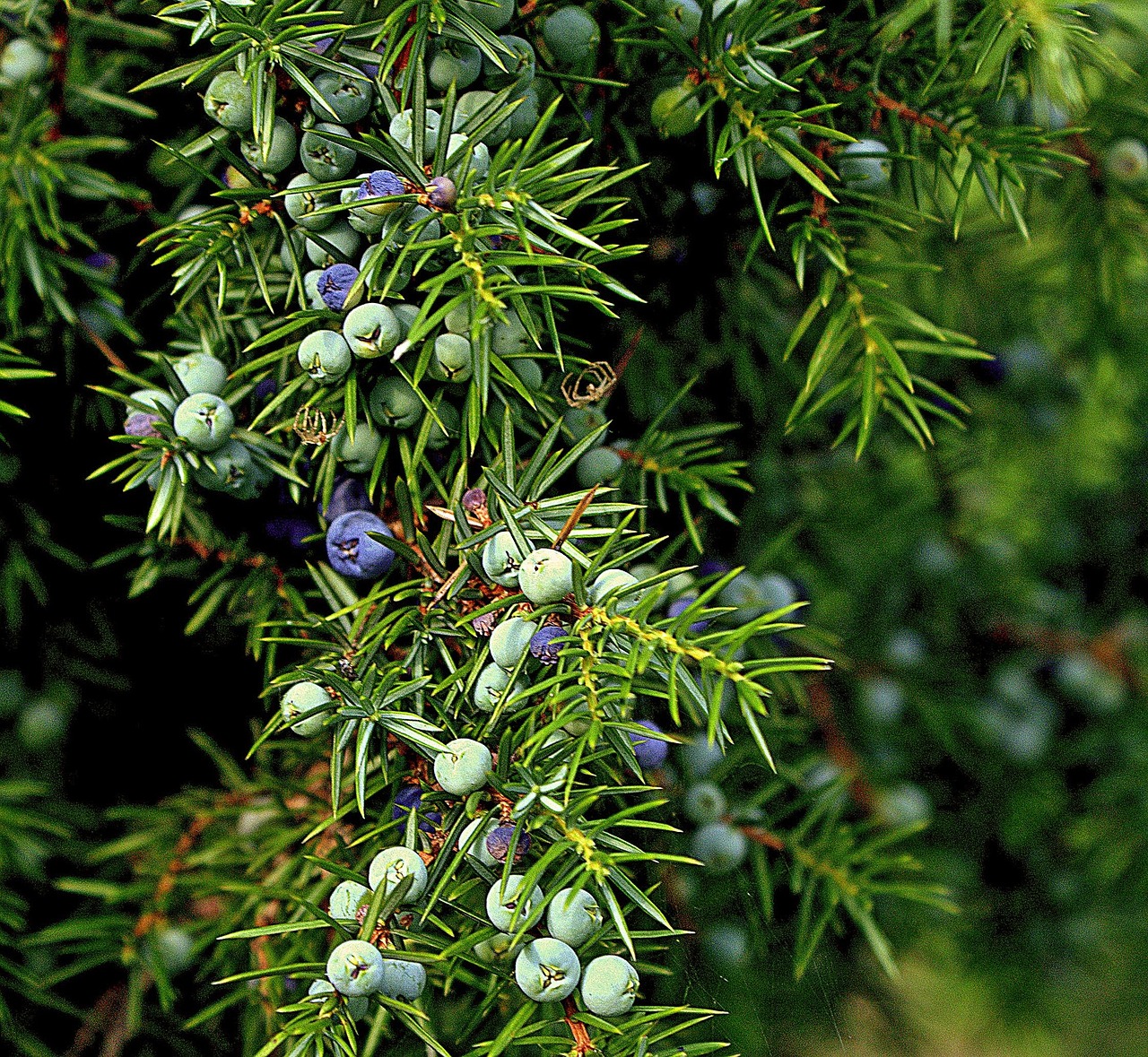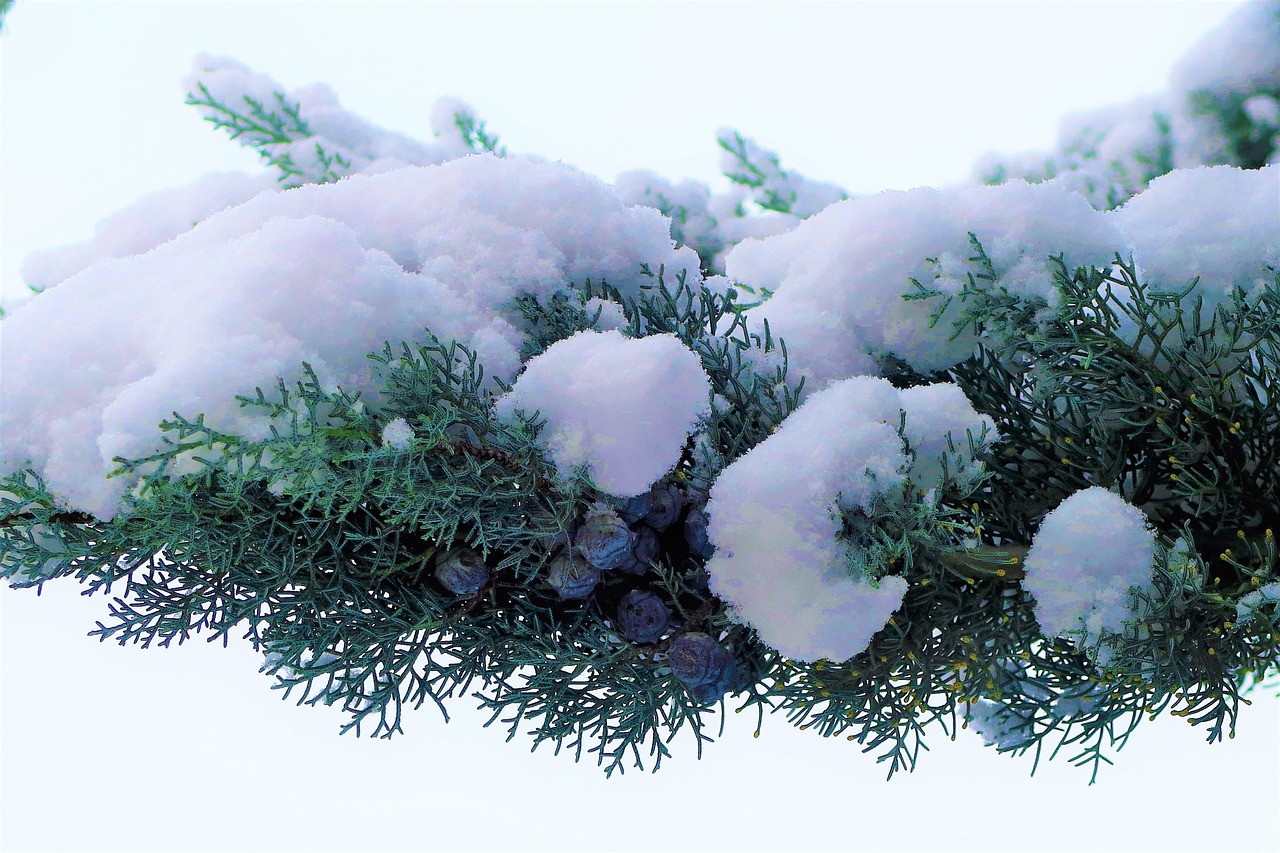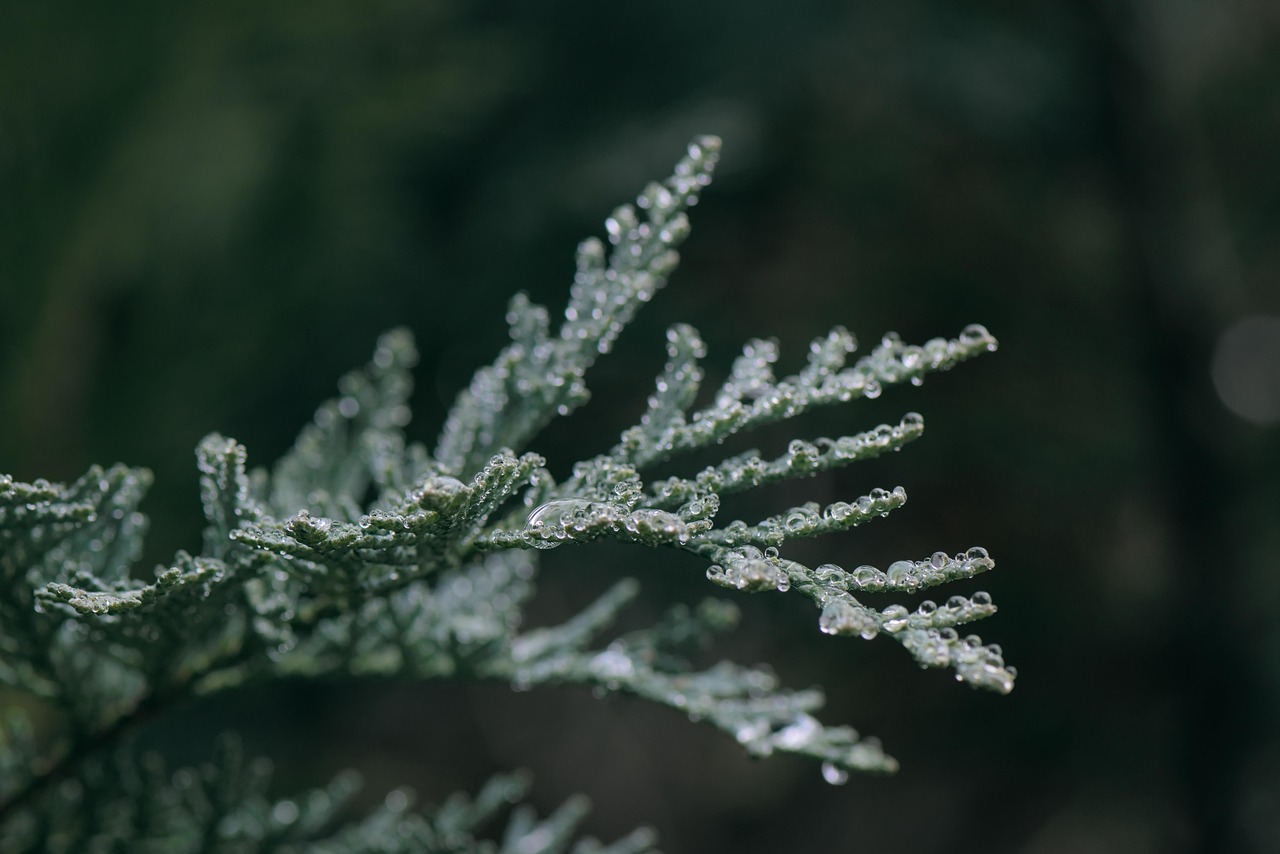Juniper trees are versatile and hardy plants that can enhance the beauty of your backyard while providing functional benefits. Their unique foliage, adaptability, and low maintenance make them a surprising ally in transforming outdoor spaces.
Understanding Juniper Trees
Juniper trees belong to the genus Juniperus, which includes a variety of species ranging from low-growing shrubs to tall trees. These evergreen conifers are native to many regions worldwide, thriving in diverse climates and soils. Their resilience and ability to withstand drought make them an excellent choice for homeowners looking to revamp their outdoor spaces.

One of the most appealing aspects of junipers is their aesthetic versatility. They come in various shapes, sizes, and colors, allowing gardeners to select options that fit their specific landscape design. The needle-like leaves can be green, blue, or even gold, providing year-round interest. Additionally, junipers produce small berries that can attract birds and other wildlife, adding life to your garden.
Benefits of Incorporating Juniper Trees into Your Backyard
When considering a backyard makeover, juniper trees offer numerous advantages that can elevate the overall appeal of your outdoor environment. Below are some key benefits:
- Low Maintenance: Once established, junipers require minimal care. They are drought-resistant and do not need frequent watering.
- Soil Stabilization: The root systems of junipers help prevent soil erosion, making them ideal for sloped landscapes.
- Wildlife Habitat: Their berries attract various bird species while providing shelter for smaller animals.
- Aesthetic Appeal: Junipers come in different sizes and forms, allowing for creative landscaping options.
- Pest Resistance: Junipers are relatively resistant to pests and diseases, reducing the need for chemical treatments.
The adaptability of juniper trees means they can fit into a wide range of garden styles. Whether you prefer a formal hedge or a naturalistic garden, there is likely a juniper variety that suits your vision.
Popular Juniper Species for Landscaping

There are several popular species of juniper that homeowners often choose for landscaping purposes. Each species has unique characteristics that may appeal to different gardening styles:
| Species | Common Name | Height | Description |
|---|---|---|---|
| Juniperus scopulorum | Rocky Mountain Juniper | 15-30 feet | Tall with a narrow form and attractive blue-green foliage. |
| Juniperus chinensis | Chinese Juniper | 3-50 feet | Diverse growth forms from shrubs to small trees with a range of colors. |
| Juniperus horizontalis | Creeping Juniper | 1-2 feet | Low-growing ground cover with a sprawling habit ideal for rock gardens. |
Choosing the right species depends on your specific needs and the overall design of your backyard. Factors such as the height of the plant and its growth habit can greatly influence its placement in your landscape.
Incorporating juniper trees into your backyard does not only enhance visual appeal but also creates a healthy ecosystem. Their ability to thrive in various conditions allows them to be an excellent choice for both novice and experienced gardeners alike.
Designing Your Backyard with Juniper Trees

When it comes to landscaping, the strategic placement of juniper trees can significantly enhance the overall design of your backyard. Their diverse forms and colors allow for creative arrangements that can complement various styles, from modern to traditional.
Creating Focal Points
One effective way to utilize juniper trees in your backyard is by creating focal points. A well-placed juniper tree can draw the eye and serve as a centerpiece for your garden. Here are some tips on how to achieve this:
- Select a Statement Species: Choose a larger juniper variety, such as the Rocky Mountain Juniper, to stand out in your landscape.
- Layering: Use smaller junipers around the base of a larger tree to create depth and visual interest.
- Contrast: Pair junipers with flowering plants or other foliage to highlight their unique colors and textures.
By thoughtfully positioning these trees, you can establish a dynamic visual hierarchy in your backyard, guiding visitors’ eyes throughout the space.
Junipers as Hedges and Screens
Another practical use for juniper trees is their ability to serve as natural hedges or privacy screens. This feature can be particularly beneficial in urban areas where homes are close together. Here are some benefits of using junipers for this purpose:
- Dense Growth: Junipers have dense foliage, which provides excellent screening from neighbors or street views.
- Noise Reduction: A well-planned juniper hedge can help absorb sound, creating a quieter outdoor retreat.
- Year-Round Privacy: Being evergreen, junipers maintain their foliage throughout the year, ensuring continuous privacy.
To create an effective hedge, consider planting a row of junipers such as Juniperus chinensis, which can grow tall and wide depending on the variety selected. Regular trimming will help maintain the desired shape and density.
Enhancing Garden Aesthetics with Juniper Trees
In addition to their functional benefits, juniper trees can greatly enhance the aesthetics of your garden. With their varied textures and colors, junipers can add richness and diversity to your landscape design. Here are some suggestions to elevate your garden’s look using junipers:
Color Coordination
Junipers come in a range of hues, from deep greens to vibrant blues and even golden tones. This color variation allows you to coordinate with other plants in your garden. Consider these aspects:
- Complementary Colors: Pair blue-hued junipers with warm-colored flowers like marigolds or daylilies for a striking contrast.
- Monochromatic Schemes: Use different shades of green and blue junipers to create a serene, monochromatic garden.
Textural Variety
The unique foliage of junipers also adds texture to your garden. Combining different types of junipers can create an appealing layered effect. For example:
- Needle Varieties: Use needle-like foliage varieties alongside broader-leaved plants for contrast.
- Creeping Forms: Incorporate creeping junipers among rocks or ground cover plants to soften hard edges.
This combination of color and texture can transform an ordinary garden into an extraordinary one, making it visually engaging throughout the seasons.
Junipers in Garden Themes
Juniper trees also fit seamlessly into various garden themes, allowing for cohesive designs that tell a story. Here are some popular themes where junipers excel:
Rock Gardens
The natural resilience and low-growing forms of certain junipers make them ideal for rock gardens. Their ability to thrive in rocky soil complements the rugged aesthetic of this garden style.

Cottage Gardens
In cottage gardens, junipers can provide structure among the more chaotic planting schemes typical of this style. Their evergreen nature offers a reliable backdrop for seasonal blooms.
Desert Gardens
For desert or xeriscape gardens, junipers are an excellent choice due to their drought resistance. They fit perfectly within themed spaces that prioritize low-water-use plants.
By incorporating juniper trees into your backyard makeover, you can achieve both beauty and practicality, creating an outdoor space that is both functional and visually stunning.
Maintaining Juniper Trees for Optimal Growth
To enjoy the full benefits of juniper trees in your backyard, proper maintenance is essential. They are resilient plants; however, some care is needed to ensure they thrive and continue to enhance your landscape. Below are some key maintenance tips to consider.
Watering Practices
Juniper trees are drought-tolerant once established, but they require proper watering during their initial growth phase. Here are some guidelines:
- Initial Watering: Water new juniper trees deeply once a week for the first year to help establish a robust root system.
- Adjusting Watering: After the first year, reduce watering to once every two to three weeks, depending on rainfall and soil conditions.
- Signs of Drought: Yellowing foliage or wilting can indicate that the tree needs more water.
Pruning Techniques
Pruning is an important aspect of maintaining the health and shape of juniper trees. Here are some effective pruning practices:
- Timing: The best time to prune junipers is in late winter or early spring before new growth begins.
- Removing Dead or Diseased Branches: Regularly inspect your junipers for any dead or damaged branches and remove them to prevent disease spread.
- Shaping: Lightly trim to shape the tree and encourage bushier growth, but avoid cutting into old wood, as junipers may not sprout new growth from these areas.
By following these pruning techniques, you can maintain a healthy appearance while encouraging growth and fullness in your juniper trees.
Pest and Disease Management
While junipers are generally resistant to pests and diseases, they can occasionally be affected. Understanding common issues can help you take proactive measures.
Common Pests
Some pests that might affect juniper trees include:
- Spider Mites: These tiny pests can cause yellowing leaves. Regularly checking for webs can help identify infestations early.
- Caterpillars: Some caterpillar species may feed on juniper foliage. Manual removal or organic insecticides can help manage them.
Disease Prevention
Fungal diseases can also impact junipers. Here are a few preventive steps:
- Avoid Overcrowding: Ensure adequate spacing between plants for good air circulation, which helps prevent fungal growth.
- Watering Techniques: Water at the base of the tree rather than overhead to keep foliage dry.
- Fungicide Application: If disease occurs, applying a fungicide at the first signs of trouble can be effective. Always follow the manufacturer’s instructions.
Environmental Considerations for Juniper Trees
The environment in which juniper trees are planted can significantly affect their health and growth. Here are some considerations to keep in mind:
Soil Requirements
Junipers thrive in well-drained soils. Consider the following:
- Soil Testing: Conduct a soil test to determine pH levels and nutrient content to ensure optimal growing conditions.
- Aeration: If the soil is compacted, aerating it can improve drainage and root health.
Sunlight Needs
Junipers prefer full sun but can tolerate some shade. Here’s how to ensure they receive adequate sunlight:
- Selecting Locations: Choose planting sites that receive at least six hours of direct sunlight daily.
- Monitoring Growth: If a juniper appears leggy or sparse, it may not be receiving enough light, indicating a need for relocation.
By understanding and implementing these maintenance strategies, you can ensure that your juniper trees remain healthy and vibrant, contributing to the beauty and functionality of your backyard space.
Integrating Juniper Trees with Other Landscaping Elements
To maximize the aesthetic and functional benefits of juniper trees in your backyard, consider how they can be integrated with other landscaping elements. This holistic approach will create a cohesive and inviting outdoor space.
Combining with Flowering Plants
Junipers pair beautifully with a range of flowering plants. Their evergreen foliage provides a constant backdrop that enhances the vibrancy of seasonal blooms. Here are some ideas:
- Perennials: Plant perennials like coneflowers or daylilies alongside junipers to create a colorful, layered effect.
- Annuals: Use annuals such as petunias or marigolds in front of junipers for a pop of color throughout the summer.
Incorporating Hardscape Features
Hardscape features, such as pathways, patios, or garden walls, can be enhanced with the addition of juniper trees. Consider these tips:
- Pathway Borders: Use low-growing junipers to frame pathways, providing both visual appeal and a natural barrier.
- Vertical Elements: Taller junipers can be placed near seating areas or patios to create privacy and a sense of enclosure.
Utilizing Mulch and Ground Cover
Ground cover plants and mulch can complement juniper trees by adding color and texture while helping to retain soil moisture. Here are some suggestions:
- Ground Covers: Consider using creeping thyme or sedum as ground cover plants that thrive in similar conditions as junipers.
- Mulching: Apply organic mulch around the base of junipers to suppress weeds and enhance moisture retention in the soil.
Junipers and Sustainability
In today’s environmentally conscious world, incorporating sustainable practices into gardening is essential. Juniper trees offer several sustainable benefits that align with eco-friendly landscaping.
Drought Resistance
As drought-tolerant plants, junipers require minimal water once established. This characteristic makes them an ideal choice for sustainable landscaping, especially in regions prone to water shortages. By incorporating junipers, you can reduce water usage while maintaining a vibrant garden.
Wildlife Support
Junipers contribute to biodiversity by providing habitat and food for various wildlife species. Their berries attract birds, while their dense foliage offers shelter for small animals. This support for local fauna creates a thriving ecosystem right in your backyard.
Soil Improvement
The root systems of juniper trees help improve soil structure by preventing erosion and promoting aeration. Additionally, their ability to grow in poor soil conditions makes them an excellent choice for enhancing soil quality over time.
Conclusion
Incorporating juniper trees into your backyard makeover presents numerous opportunities for both beauty and functionality. From creating stunning focal points to providing year-round greenery, their versatility makes them invaluable in landscape design. With proper maintenance, such as watering, pruning, and pest management, junipers can thrive in diverse environments while supporting local wildlife and contributing to sustainable gardening practices.
Their adaptability to various garden styles—from rock gardens to cottage gardens—allows homeowners to express their creativity while enhancing the overall aesthetic of their outdoor spaces. By combining juniper trees with other plants and hardscape elements, you can create a cohesive environment that is not only visually appealing but also environmentally sustainable.
Ultimately, juniper trees are more than just decorative elements; they are essential allies in achieving a beautiful and functional backyard. With thoughtful planning and care, these remarkable trees can transform your landscape into a serene oasis that invites relaxation and enjoyment for years to come.





